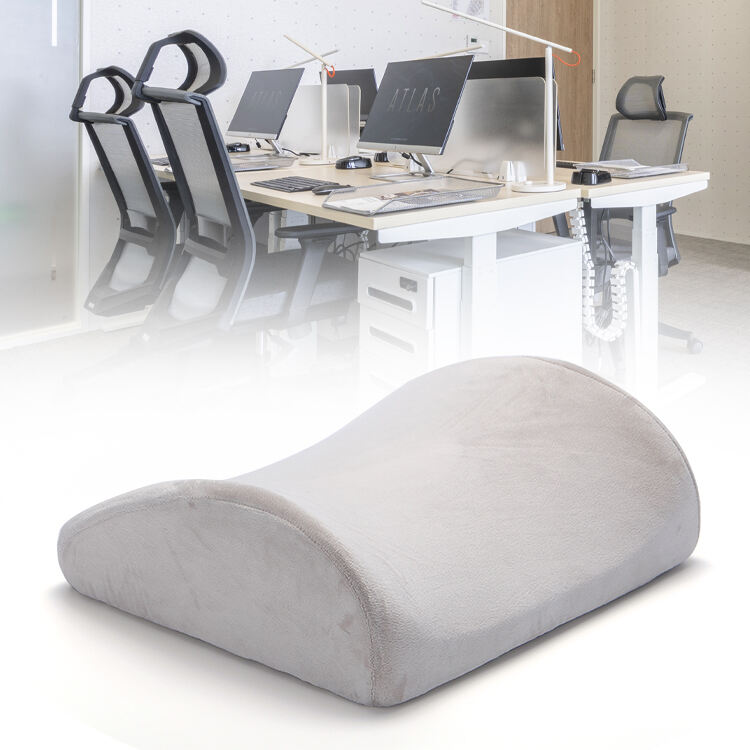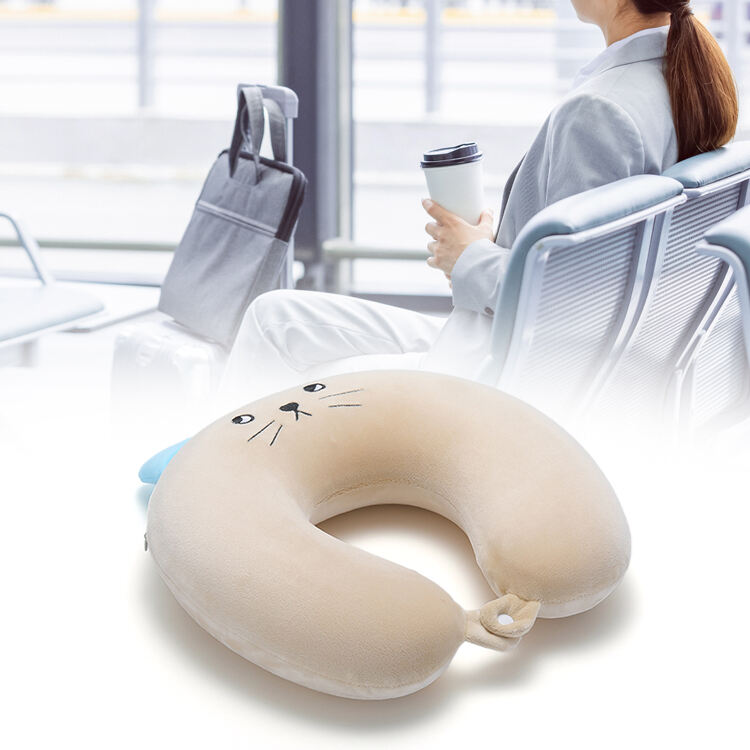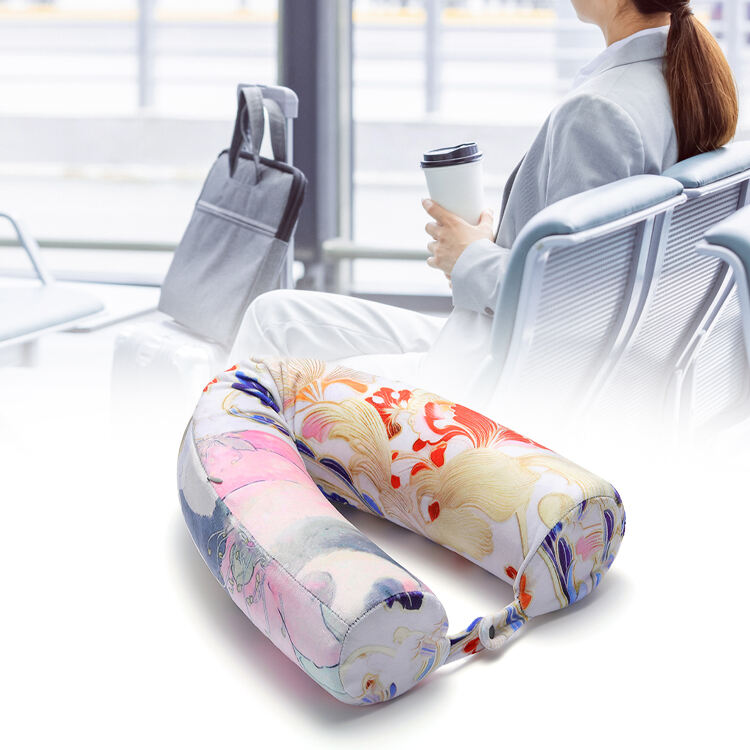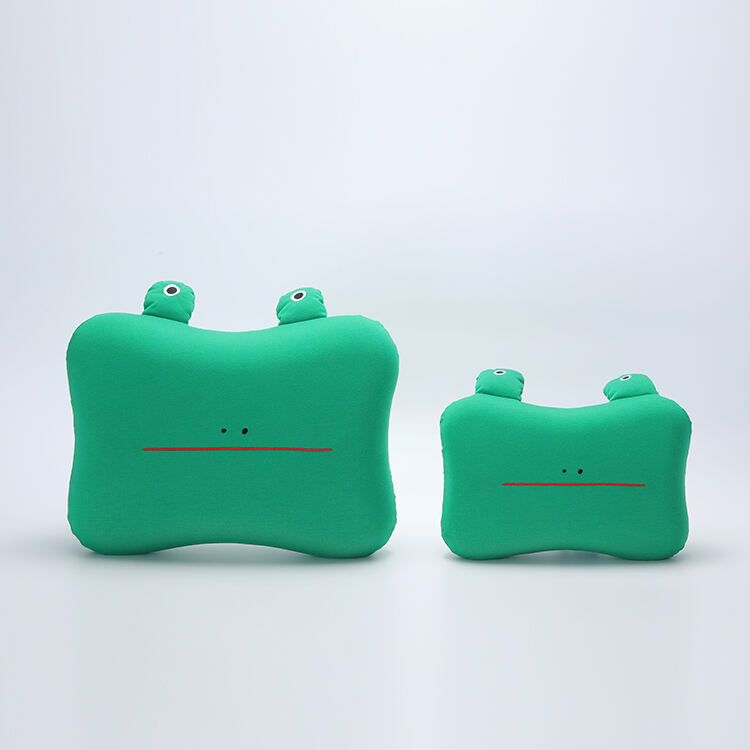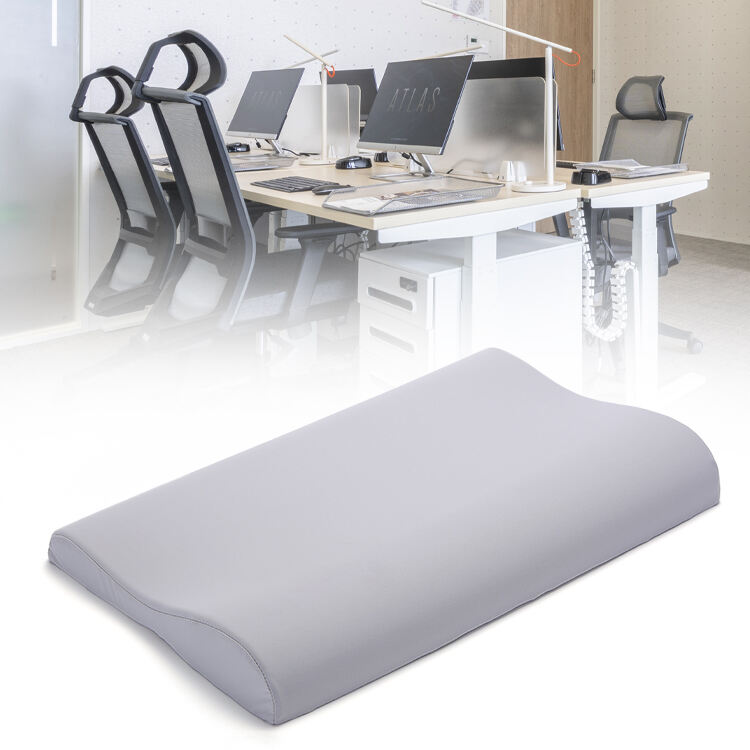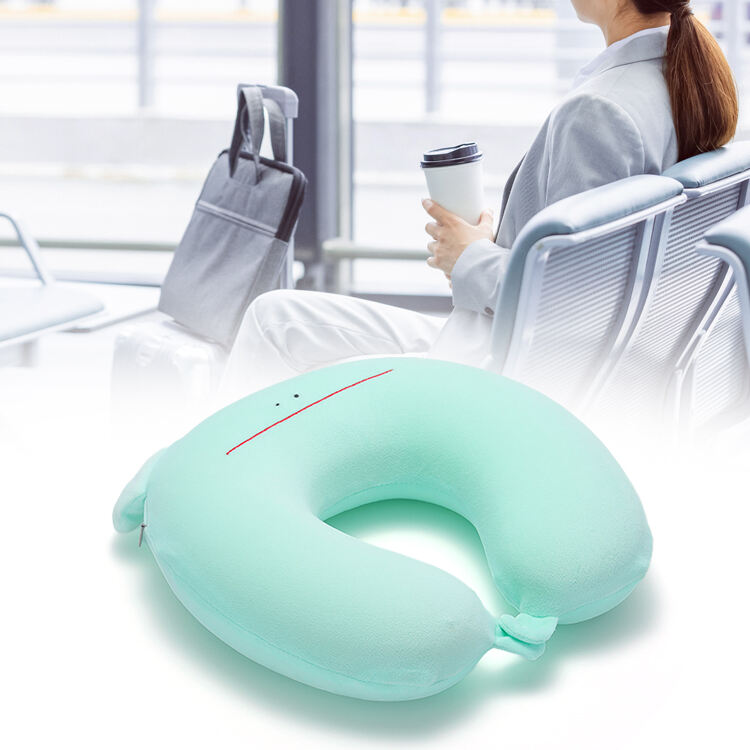Sustainable Materials Redefining Travel Pillow Innovation
Innovative Use of Biodegradable and Eco-Friendly Materials in Travel Pillows
Travel pillows today are moving away from traditional stuff and embracing biodegradable options such as organic bamboo fibers, natural latex, and even foam made from mushrooms. The good news is these eco-friendly alternatives break down about 60 percent quicker compared to regular petroleum based foams without sacrificing comfort when it comes to supporting the neck during flights. Airlines looking to go green have taken notice too. Many carriers are now switching because this fits right into the International Air Transport Association's plan to cut down on single use plastics within cabin services by around 45% before 2030 rolls around. For companies wanting to show they care about environmental impact, these new pillow choices represent both practicality and responsibility rolled into one product.
From Recycled Bottles to Pillow Cores: Closing the Loop With Sustainable Materials
Manufacturers now convert 8–12 recycled PET bottles into the filling of a single travel pillow, diverting over 1.2 million plastic containers from oceans annually. This closed-loop process cuts production energy by 30% compared to virgin polyester and delivers equivalent durability, offering a scalable solution for eco-conscious accessory design.
Plant-Based and Algae-Based Foams: The Next Generation of Eco-Conscious Cushioning
Algae-blended foams represent a breakthrough in sustainable cushioning, absorbing CO₂ during cultivation and reducing volatile organic compound (VOC) emissions by 70% compared to traditional memory foam. Field tests confirm they match memory foam’s contouring performance while meeting FAA cabin air quality standards–making them ideal for aviation use.
Trusted Certifications: How CertiPUR-US and OEKO-TEX Ensure Safe, Sustainable Production
CertiPUR-US certification ensures foams are free from 98% of harmful flame retardants, while OEKO-TEX verifies the absence of toxic chemicals in textile components. Together, these standards help brands comply with EU REACH regulations and California’s Proposition 65, with third-party validation now influencing 62% of corporate procurement decisions for inflight products.
How Airline Sustainability Regulations Are Reshaping Travel Pillow Design
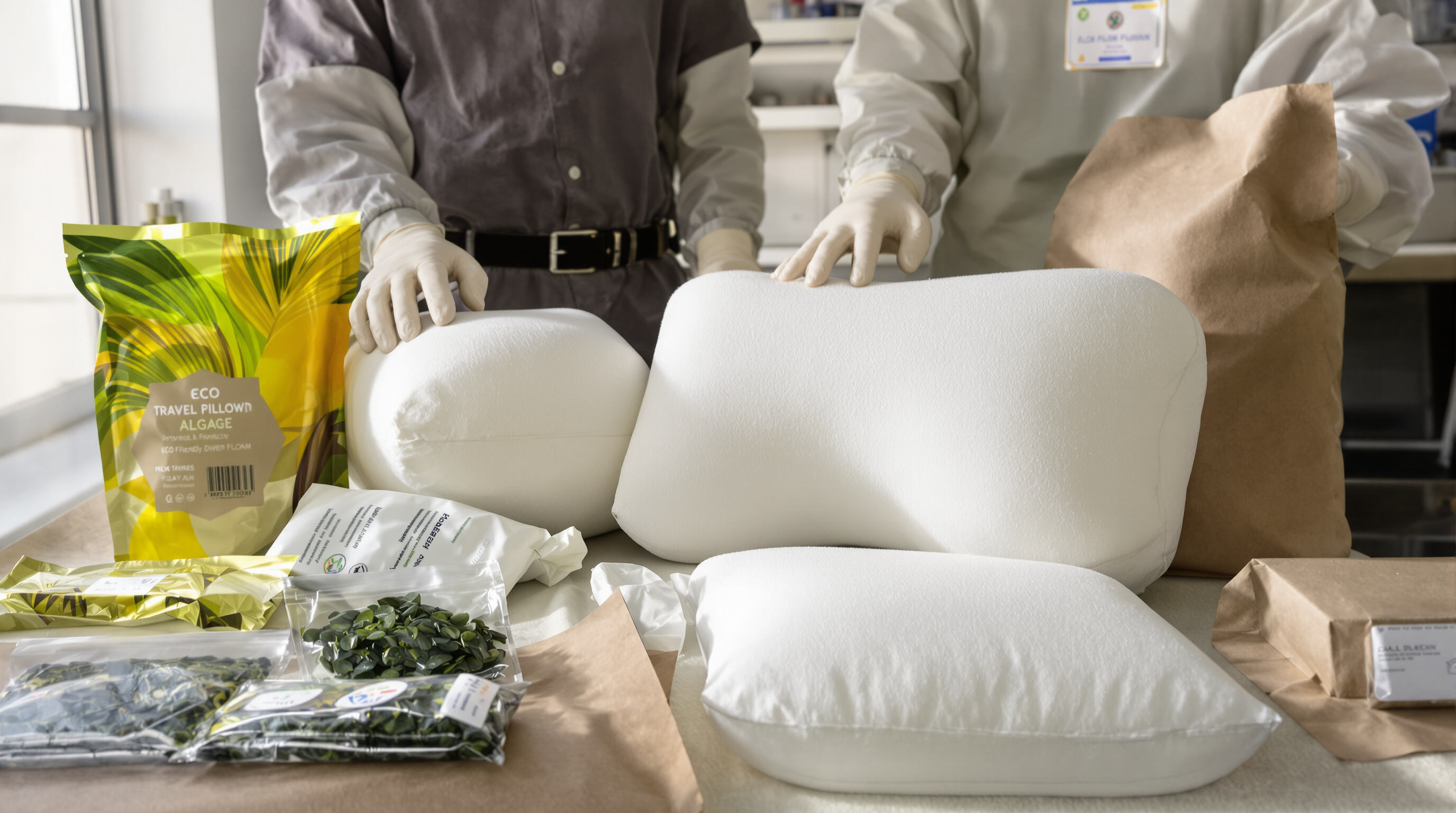
New aviation environmental standards impacting accessory manufacturing
The aviation industry's green initiatives have reached even the smallest details like passenger items. According to International Air Transport Association rules, every travel pillow must emit no more than 0.7 kilograms of carbon dioxide by next year. This regulation is pushing manufacturers away from traditional foam made with oil derivatives toward new options mixed with algae components. These eco-friendly versions break down naturally within just five years and still pass all necessary fire safety checks set by aviation authorities. At the same time, European Union guidelines on packaging materials are making airlines switch to biodegradable storage solutions crafted from fungi roots and hemp strands. Suppliers who want to keep their business relationships with major carriers need to completely rethink how they source raw materials and run their manufacturing operations if they hope to stay competitive in this rapidly changing market.
Meeting airline safety, emissions, and recyclability compliance requirements
Modern travel pillows need to hit some pretty tough marks when it comes to safety, emissions, and being environmentally friendly. They should have no toxic smells according to REACH Annex XVII regulations, score at least 80% on cradle-to-cradle recyclability tests, and meet all those FAA fire safety rules too—all without using those pesky PFAS coatings everyone's talking about lately. Some cool new stuff is happening though. Silica mixed into organic latex can actually stand up to heat as high as 700 degrees Celsius, which keeps things safe even during long flights. The design itself matters too. Many companies now make pillows where the plastic beads can be pulled out separately from the natural buckwheat shells once they reach the end of their life cycle. This makes recycling much easier for consumers. Big name brands back these green initiatives with certifications like ISO 14001 and Environmental Product Declarations. Their stats show that every pillow made helps keep around 14 kilograms of trash out of landfills, all while still providing good neck support throughout the journey.
Ergonomic and Customizable Travel Pillow Solutions for the Eco-Conscious Flyer
Personalized Fit Through 3D Scanning and Modular Design Innovation
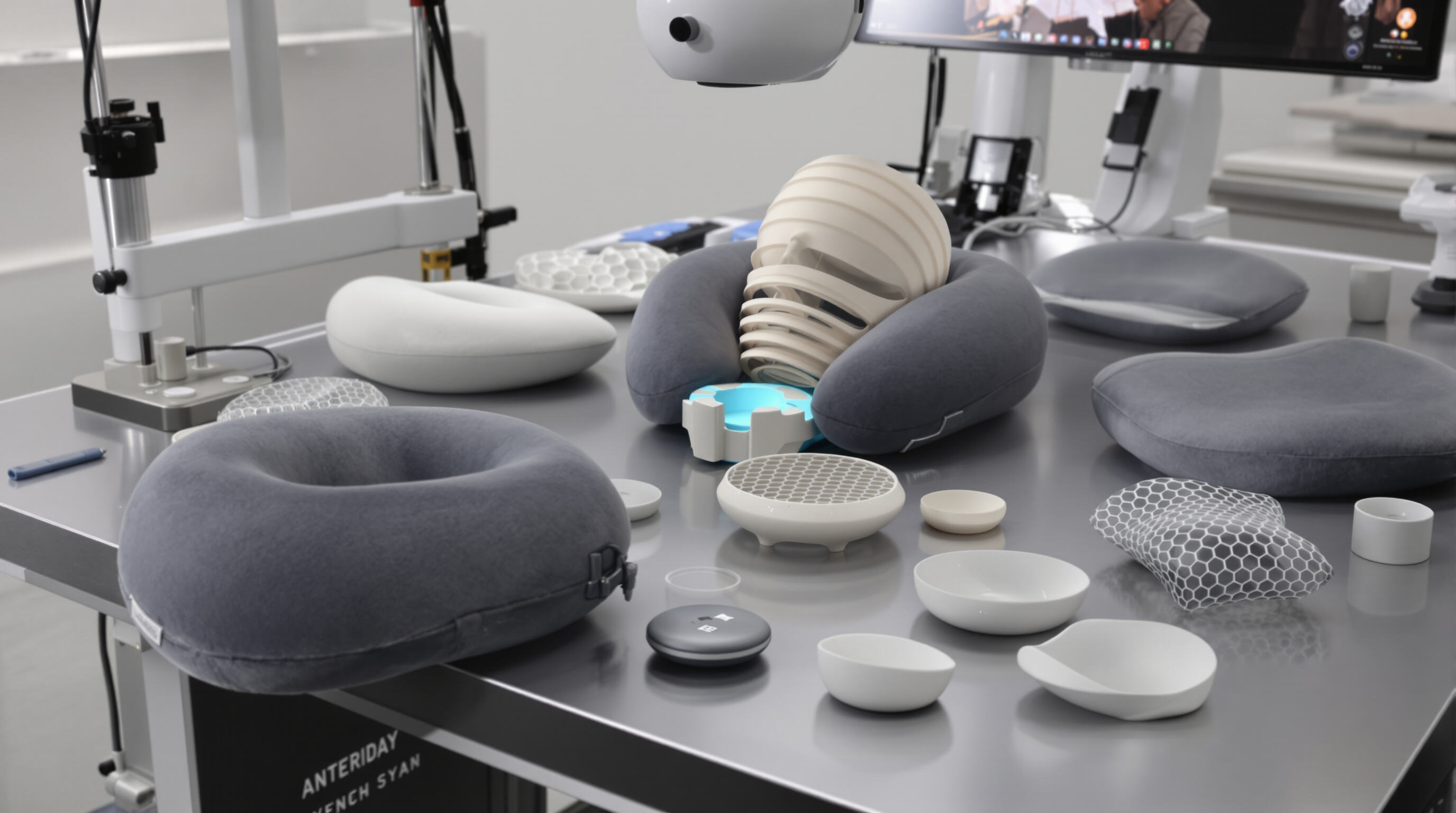
New developments in 3D scanning technology now make it possible to create travel pillows that fit each person's unique neck and back shape. According to research published last year on sleep ergonomics, people who use these custom made supports experience about 40 percent less pressure on their spines compared to regular off-the-shelf options. Many of these pillows come with modular parts too, including detachable lower back cushions or adjustable headrests that passengers can tweak throughout long flights. The design incorporates collapsible honeycomb structures inside that keep everything firm but take up way less space when packed away, cutting down on overall packaging size by roughly two thirds. This not only makes them easier to carry around but also helps airlines meet their environmental goals for sustainable operations.
User-Driven Comfort: Adjustable Neck Support and Compact Portability
Modern product designs really focus on making adjustments easy for people, often incorporating breathable mesh sections alongside adjustable straps that can be tightened or loosened as needed. Some products now combine temperature regulating materials with built-in air chambers so folks can tweak how firm things feel while still keeping environmental considerations in mind since these items remain recyclable. A recent 2024 poll showed something interesting about travelers who fly regularly - around three out of four respondents put compact storage at the very top of their wish list when looking for gear. They prefer items that shrink down to about a third of their normal size, which makes all the difference when packing for trips where every inch counts in luggage space.
Balancing Ergonomic Excellence With Low Environmental Impact
Plant based memory foam made from things like soybeans or algae breaks down about twelve times quicker than regular petroleum based foam, yet still gives the same kind of pressure relief people need. Look at the numbers too there are now plenty of brands carrying OEKO TEX certification covering around 34 percent of the market space as per latest 2023 figures from textile industry reports. People clearly want their bedding materials free from harmful chemicals these days. What's interesting is how manufacturers have managed to keep all those good properties we associate with quality mattresses orthopedic support, proper ventilation without making any real sacrifice when it comes to planet friendliness.
| Design Feature |
Traditional Material Impact |
Sustainable Alternative Benefit |
| Neck Support Core |
Non-recyclable PU foam |
Soy-based foam (90% biodegradable) |
| Outer Fabric |
Virgin polyester |
Recycled PET bottles (3 per pillow) |
| Packaging |
Plastic film |
Mushroom-root mycelium (composts in 45 days) |
This shift enables travelers to eliminate 1.2 lbs of single-use plastic annually per pillow while maintaining clinical-grade neck support.
Consumer Demand and Market Trends Driving Sustainable Travel Pillow Innovation
Growing Preference for Hypoallergenic, Biodegradable, and Non-Toxic Travel Pillows
People traveling often are starting to care more about what their bags and gear are made of. According to Future Market Insights data from 2023, around two thirds of regular travelers now look for items made with environmentally friendly materials, which is way higher than the 52% reported back in 2020. Companies have taken notice and begun making changes, incorporating things like foam made from plants instead of synthetic stuff, and fabrics certified as organic by GOTS standards. There's also been growing interest in products that won't irritate sensitive skin because they don't contain harmful chemicals like formaldehyde or phthalates. This has led to some interesting developments in the market, including pillows filled with organic buckwheat shells and bedding covers that meet OEKO-TEX safety standards for consumers who want peace of mind about what touches their skin during trips.
How Eco-Aware Travelers Are Reshaping B2B Product Development Strategies
Making products that last longer and cause less harm has become really important for businesses these days. Manufacturers are spending way more on research for environmentally friendly materials compared to regular foam options, about 34% extra according to recent figures. Airlines and big companies buying stuff are pushing this trend hard, which means the market for green travel pillows should see pretty impressive growth rates over the next few years, maybe around 34% annually until 2027 as per the latest travel accessory report from 2024. Companies are changing how they source materials too, using things like blockchain tracking for recycled plastic bottles and creating products where individual parts can be taken apart and reused separately. These changes aren't just good for the planet but also help corporations meet their environmental goals when reporting to stakeholders.
Future-Proofing Travel Pillows: Trends, Technology, and Authentic Sustainability
Smart features in sustainable designs: Temperature control and app integration
Sustainable innovation now includes smart functionality. Travel pillows with plant-based phase-change materials regulate temperature passively, reducing energy use by 30% compared to conventional climate-controlled models (Sustainable Aviation Report 2024). Integrated sleep-tracking sensors connect via low-power Bluetooth to mobile apps, offering personalized posture recommendations without compromising environmental performance on long-haul flights.
Emerging materials and compostable pillow covers for circular lifecycle design
The field of circular design is picking up steam thanks to innovative materials such as mycelium foam and algae based fillings that can actually break down completely in just six months. What's interesting about mycelium is how it takes what would otherwise be agricultural waste products and turns them into something that feels almost like memory foam when used for cushioning purposes. There are also these new kinds of marine biodegradable polymer shells now available which will literally disappear if they end up in waterways somewhere. Instead of relying on those harmful plastic microbeads we've all heard so much about lately, companies are starting to experiment with natural alternatives like buckwheat hulls or kapok fibers. And get this the storage bags themselves aren't made from regular plastic either but from stuff that breaks down over time into actual fertile soil after disposal.
| Material Innovation |
Decomposition Timeline |
Carbon Footprint Reduction |
| Algae-based foams |
< 6 months |
40% less than synthetic |
| Mushroom mycelium |
3-4 months |
60% lower emissions |
| Plant-starch shells |
5-8 weeks |
Bio-sealed water barrier |
Avoiding greenwashing: How brands can demonstrate genuine eco-commitment
Sustainability isn't just about good intentions—it needs actual proof and openness. Certifications from outside groups such as OEKO TEX and those tests for compostability that meet BPI standards give people something real to check against. The blockchain thing is pretty cool too. It lets folks actually follow where stuff comes from all the way through to what ends up on store shelves. When companies publish their lifecycle assessments and get their carbon numbers verified by someone else, that builds genuine trust with customers. And then there's regenerative farming practices. Brands that invest serious money into these kinds of agricultural methods show they're thinking beyond just quarterly profits. They want to make sure their green claims aren't just marketing fluff but actual commitments to planet health over many years.
FAQ
What are sustainable materials used in travel pillows?
Sustainable materials used in travel pillows include organic bamboo fibers, natural latex, algae-based foams, and recycled PET bottles, which are eco-friendly alternatives that break down quicker than traditional petroleum-based foams.
How do algae-based foams contribute to sustainability?
Algae-based foams absorb CO₂ during cultivation and reduce volatile organic compound (VOC) emissions by 70% compared to traditional memory foam. They offer similar contouring performance while being environmentally friendly.
What certifications ensure the safety and sustainability of travel pillows?
Certifications like CertiPUR-US and OEKO-TEX ensure travel pillows are free from harmful flame retardants and toxic chemicals, helping brands comply with regulations like EU REACH and California's Proposition 65.
How are airlines contributing to travel pillow sustainability?
Airlines are contributing by adopting eco-friendly travel pillows that meet sustainability regulations, such as emitting no more than 0.7 kilograms of CO₂ and using biodegradable storage solutions.
